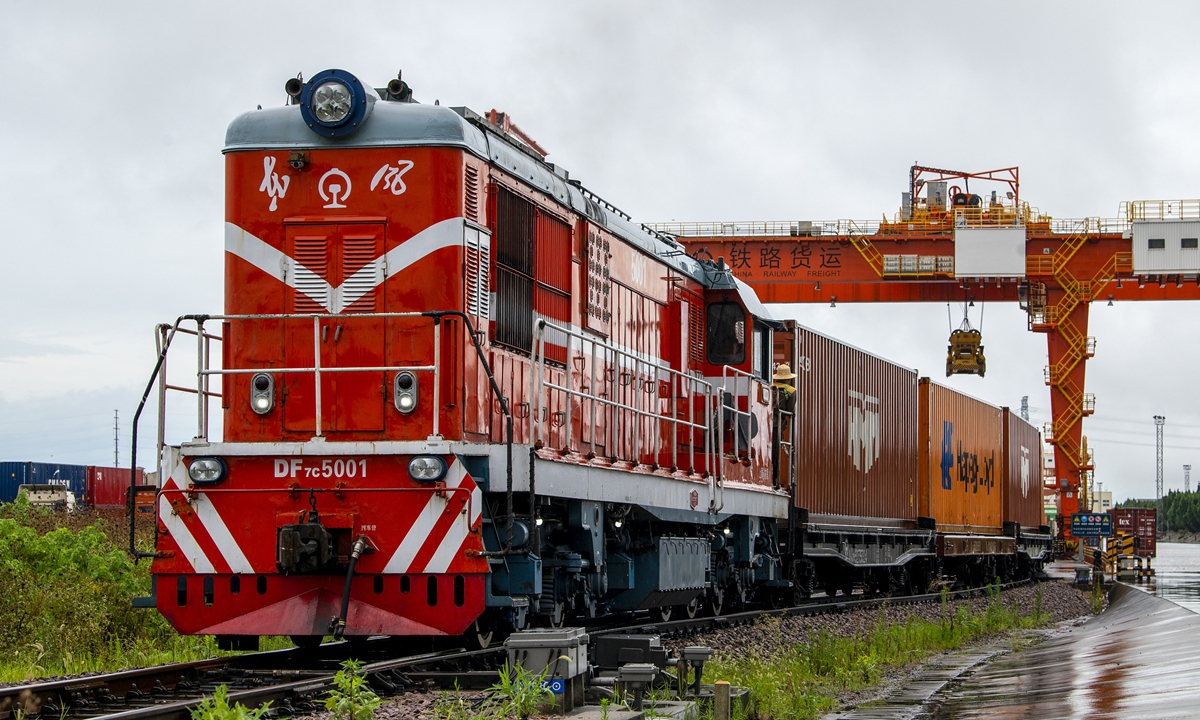
Photo:VCG
As a train loaded with 110 containers of Indonesian ghee, Vietnamese sweet potato starch and Hainan coconut juice departed from Qinzhou, South China's Guangxi Zhuang Autonomous Region on Sunday, the New International Land-Sea Trade Corridor served its 30,000th rail-sea intermodal train during the past six years.
According to China Media Group, the number of rail-sea intermodal trains on the trade corridor has increased 49 times from 178 in 2017 to 8,820 in 2022, with an annual growth of more than 30 percent. The trains are expected to make more than 9,000 trips in 2023.
Data showed that in 2022, the total foreign trade of provinces along the corridor through Guangxi ports exceeded 500 billion yuan ($69.49 billion), a record high. In the first half of 2023, total trade exceeded 290 billion yuan.
Launched in 2017, the New International Land-Sea Trade Corridor is a trade and logistics passage jointly built by provincial-level regions in western China and ASEAN members. It is also one of the key projects under the China-proposed Belt and Road Initiative.
Thanks to the corridor, an increasing number of products from China's inland provinces and regions along the route, such as Northwest China's Ningxia Hui Autonomous Region's red wine, Luosifen and nuts from Northwest China's Xinjiang Uygur Autonomous Region, have been sold to broader markets worldwide.
In addition, Laotian redwood furniture, Philippine durians and Indonesian civet coffee can reach Southwest China's Chongqing Municipality through the corridor in just a few days.
Benefiting from the corridor, trade between China and ASEAN members has steadily increased in recent years. Data from China's General Administration of Customs showed that in the first eight months this year, ASEAN remained to be China's top trading partner, with total trade of 4.11 trillion yuan, an increase of 1.6 percent year-on-year and accounting for 15.2 percent of China's total foreign trade.
The corridor has basically formed three main roads in the east, middle and west, as well as three logistics modes - rail-sea intermodal transportation, international railroad intermodal transportation and road shuttle buses. It serves 69 cities in 18 provincial-level regions in China and has expanded its reach to 393 ports in 119 countries and regions.
From the initial shipments of ceramics and plates, the transportation products have increased to 940 categories including grain, vehicle parts and new materials.
Global Times




